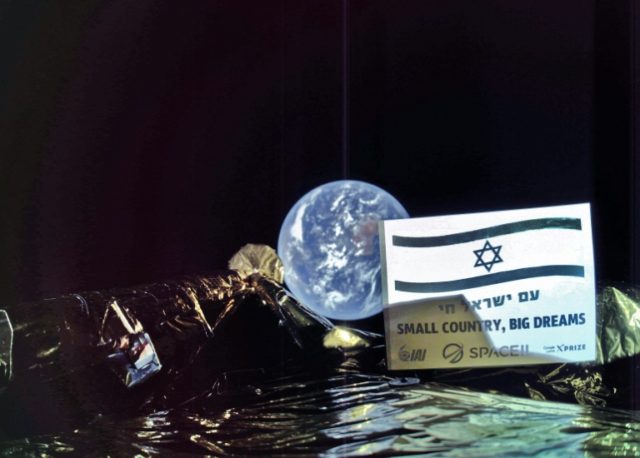TEL AVIV – The moon may have got more than it bargained for when Israeli lunar lander Beresheet crash-landed on its surface in April, because the spacecraft was carrying thousands of tardigrades, microscopic “water bears” that can survive almost all environments, including space, a report published Monday by Wired magazine said.
As well as the 0.5 mm dehydrated tardigrades, the SpaceIL lander was also carrying a DVD-sized archive containing 30 million pages of information and human DNA samples as part of a project by the Arch Mission Foundation, founded by Nova Spivack.
Based on their analysis of the spacecraft’s trajectory and the composition of the lunar library, Spivack told Wired he was fairly sure that the cargo survived the impact.
“For the first 24 hours we were just in shock,” Spivack said. “We sort of expected that it would be successful. We knew there were risks but we didn’t think the risks were that significant.”
Tardigrades, arguably the most resilient animals in the world, can survive years without food or water and a 2007 experiment by the European Space Agency proved that the tiny water bears are also able to survive outer space environments that would kill humans in minutes.
Theoretically, the tardigrades could be revived in future decades and brought back to earth by astronauts, Spivack told the magazine.
In the best-case scenario, Beresheet ejected the Arch Mission Foundation’s lunar library during impact and it lies in one piece somewhere near the crash site. But Spivack says that even if the library broke into pieces, their analysis shows that these fragments would be large enough to retrieve most of the analog information in the first four layers. As for whether any of the DNA or tardigrades are still intact, that’s anyone’s guess, but Spivack says there’s no reason to worry about water bears taking over the moon. Any lunar tardigrades found by future humans will have to be brought back to Earth or somewhere with an atmosphere in order to rehydrate them.
“Our job, as the hard backup of this planet, is to make sure that we protect our heritage — both our knowledge and our biology,” said Spivack. “We have to sort of plan for the worst.”
On April 11, millions of people around the world watched with bated breath as Israel bid to become the fourth country in the world to successfully land on the moon. Breitbart News was in the control room at Israel Aerospace Industries where the team behind Beresheet watched with a mixture of nerves and excitement.
Weighing only 1300 pounds and roughly the size of a car, the lander was much smaller than other spacecraft and operated by a single computer. Beresheet cost some $100 million to build but that is pennies when it comes to space exploration, Kfir Damari of SpaceIL explained, with other moon landers costing at least ten times that amount.
Most of the sum was put forward by private philanthropists, chief among them South African billionaire Morris Kahn.
“I’m very excited, not just for Israel but for the Jewish people as a whole,” Kahn told Breitbart Jerusalem before the spacecraft crashed.
Kahn said three elements motivated him to fund the project. The first was to bring Israel into the space age. The second was to encourage young people to become involved in the sciences. The third was to make Israelis proud. “This is an incredible accomplishment for all of us. It’s a uniquely Israeli project.”
After the crash landing, Prime Minister Benjamin Netanyahu, who was also in the control room, vowed that an Israeli spacecraft would land on the moon in the next two or three years.
However, if that is the case, it won’t be SpaceIL’s. In June, the company, which was founded by three friends over beers, announced that it would not reattempt the lunar landing because it “wasn’t challenging enough.”

COMMENTS
Please let us know if you're having issues with commenting.